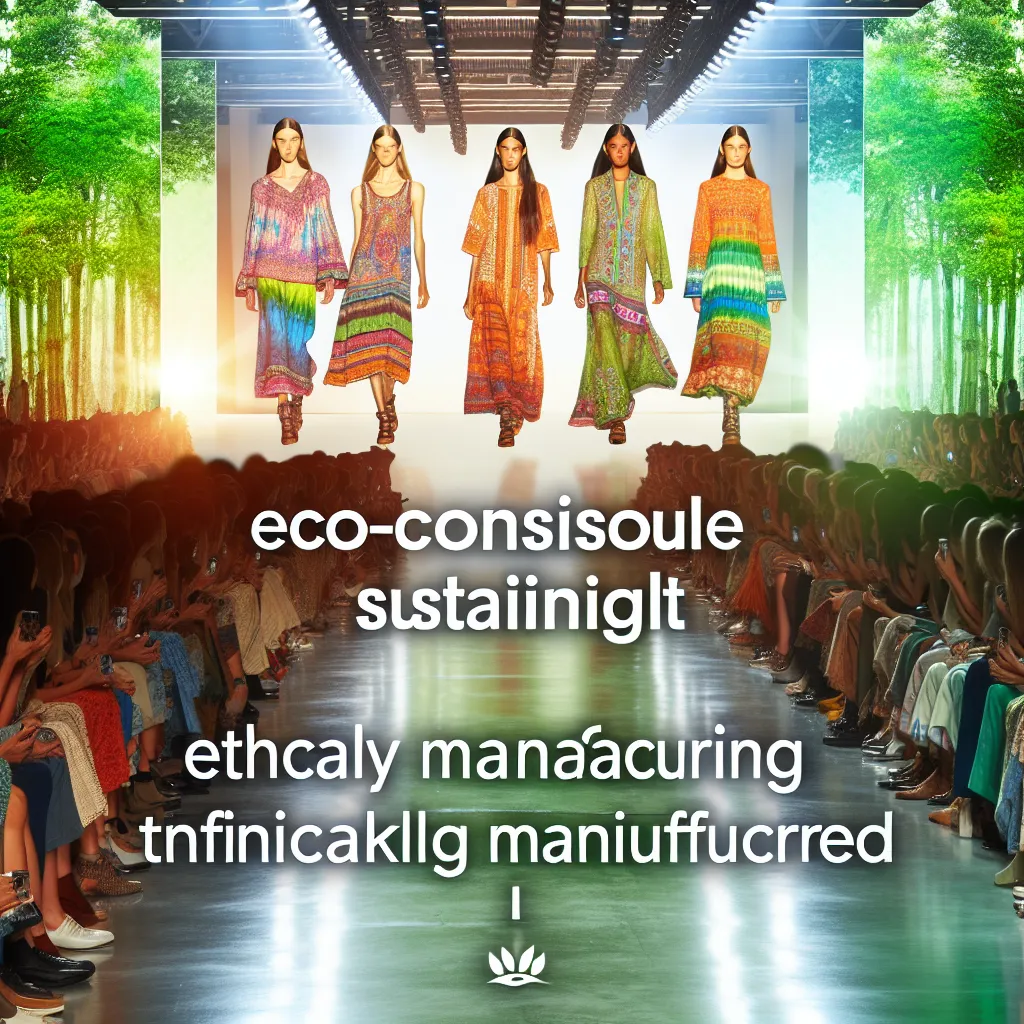The History of Sustainable Fashion: From Origins to Modern Trends
The history of sustainable fashion can be traced back to the roots of the global environmental movement in the 1960s and 1970s. During this time, concerns about environmental damage caused by the fashion industry began to emerge, leading to the birth of eco-friendly and sustainable fashion practices. Early efforts focused on organic and natural materials, such as cotton, hemp, and wool, as well as the use of traditional garment-making techniques that minimized waste and pollution.
As the sustainable fashion movement gained momentum, the 1980s and 1990s saw the rise of ethical fashion and the concept of “slow fashion.” This introduced the idea of consuming and producing fashion in a way that minimizes harm to the environment and respects the rights of workers. It also emphasized the importance of durability and timelessness in clothing design, countering the fast-paced and disposable nature of the mainstream fashion industry.
In the 21st century, sustainable fashion has evolved to incorporate cutting-edge technologies and innovative materials. Designers and brands are exploring alternative and renewable sources, such as bamboo, Tencel, and recycled plastic, to create stylish and eco-conscious clothing. Furthermore, the concept of circular fashion, which promotes a closed-loop system of production and consumption, has gained traction as a way to minimize waste and maximize resource efficiency.
Today, sustainable fashion is not only a niche movement but a growing trend embraced by consumers, designers, and businesses worldwide. From eco-friendly collections by luxury fashion houses to the rise of second-hand and upcycled fashion, the industry continues to evolve towards more sustainable and ethical practices, reflecting the increasing awareness of environmental and social issues among both industry insiders and consumers.
Key Players in the Sustainable Fashion Movement
The evolution of sustainable fashion has been greatly influenced by key players in the industry who have been driving the movement towards more ethical and environmentally friendly practices. One of the leading figures in sustainable fashion is Stella McCartney, a renowned designer who has been a pioneer in promoting cruelty-free and sustainable materials. Her commitment to sustainable fashion has inspired many other luxury brands to follow suit and incorporate eco-friendly practices into their operations.
Another influential figure in the sustainable fashion movement is Livia Firth, the founder of Eco-Age and a vocal advocate for ethical fashion. Through her work, she has been actively involved in promoting transparency and sustainability within the fashion industry, urging both consumers and companies to take responsibility for their choices and environmental impact.
Additionally, the role of sustainable fashion organizations such as the Sustainable Apparel Coalition and Fashion Revolution cannot be overlooked. These organizations have played a crucial part in raising awareness about the environmental and social impact of the fashion industry, as well as in driving positive change through collective action and industry collaboration.
The collaboration between sustainable fashion advocates, industry leaders, and consumers has contributed to the widespread adoption of sustainable practices and the growing demand for eco-conscious fashion. As the movement continues to gain momentum, these key players will undoubtedly play a pivotal role in shaping the future of sustainable fashion.
The Environmental Impact of Fast Fashion
Sustainable fashion has seen a significant evolution in recent years, with a growing focus on the environmental impact of fast fashion. The rise of fast fashion, characterized by cheap, disposable clothing, has led to a range of environmental issues. The excessive production of fast fashion items contributes to high levels of water and air pollution, as well as increased carbon emissions.
Furthermore, the use of non-biodegradable materials in fast fashion leads to significant waste generation and landfill accumulation. The production of synthetic fibers, such as polyester and nylon, releases microplastics into the environment, posing a threat to marine life and ecosystems. The reliance on toxic dyes and chemicals in the production process further exacerbates the environmental impact of fast fashion.
As consumers become more aware of these issues, there has been a growing demand for sustainable and ethically produced clothing. Sustainable fashion brands are embracing environmentally friendly materials, such as organic cotton, hemp, and recycled fibers, to minimize their ecological footprint. Additionally, these brands are adopting transparent supply chains and ethical manufacturing processes to ensure that their environmental impact is minimized.
In conclusion, the environmental impact of fast fashion has sparked a fundamental shift towards sustainable fashion. With increasing awareness and the demand for eco-friendly alternatives, the fashion industry is gradually embracing more sustainable practices to mitigate its environmental effects.
Innovations in Sustainable Textiles
One of the key driving forces behind the evolution of sustainable fashion is the constant innovation in sustainable textiles. With the growing awareness of environmental issues, the fashion industry has been actively seeking alternative materials that have a lower impact on the planet. This has led to the development of a wide range of innovative sustainable textiles that are changing the landscape of fashion. From organic cotton and hemp to recycled polyester and bio-based materials, designers and brands are embracing these new options to create eco-friendly and stylish clothing.
One of the most exciting developments in sustainable textiles is the emergence of fabric made from recycled plastic bottles. This innovative approach not only helps to reduce plastic waste but also offers a durable and versatile material for clothing production. Furthermore, advancements in technology have enabled the creation of eco-friendly fabrics from agricultural by-products such as pineapple leaves, orange peels, and even mushrooms. These bio-based textiles not only minimize the environmental impact but also promote the efficient use of resources.
Additionally, the fashion industry is exploring the potential of innovative materials like lab-grown textiles, which are produced using biotechnology and require fewer resources compared to traditional fabric production. These cutting-edge materials offer promising solutions for a more sustainable future in fashion, paving the way for a new era of eco-conscious clothing.
In conclusion, the continuous innovations in sustainable textiles are revolutionizing the fashion industry, offering environmentally friendly alternatives that align with the growing demand for ethical and sustainable fashion. As designers, manufacturers, and consumers increasingly prioritize eco-conscious choices, the evolution of sustainable textiles plays a crucial role in shaping the future of fashion towards a more sustainable and responsible direction.




